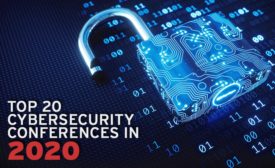Management
Calculating ROI for Better Security
Here, we dive into more conventional ROI justifications for security purchases.
February 10, 2020
Can Civilians Stop the Bleed?
The work to empower civilians to act as immediate first responders continues.
February 7, 2020
Tim McCreight: Calgary's Trusted Advisor
Find out how Tim McCreight, acting CSO for the city of Calgary, Alberta in Canada, works to ensure organizational resilience.
February 5, 2020
The Changing Role of the CISO
How is the role of the CISO evolving, and what do physical enterprise security executives need to know about it?
February 3, 2020
Sign-up to receive top management & result-driven techniques in the industry.
Join over 20,000+ industry leaders who receive our premium content.
SIGN UP TODAY!Copyright ©2024. All Rights Reserved BNP Media.
Design, CMS, Hosting & Web Development :: ePublishing














